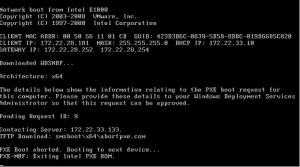How To Repair A Corrupted SD Card: All Methods


How To Repair A Corrupted SD Card: All Methods


Introduction
An SD card is a popular and convenient storage solution for cameras, smartphones, and other electronic devices. However, it can be frustrating when you encounter a corrupted SD card, which can lead to data loss and make the card unusable. While traditional methods like using CHKDSK on Windows or Disk Utility on Mac are commonly used for repairing corrupted SD cards, there are also some non-standard methods that you can try. In this comprehensive guide, we will walk you through various step-by-step processes of repairing a corrupted SD card using both standard and non-standard methods, ensuring you have the best chance of recovering your files. Additionally, we’ll provide essential tips to avoid future data loss.
Causes of SD Card Corruption
Before delving into the repair methods, it’s essential to understand the common causes of SD card corruption. Some of the main causes include:
1. Improper Ejection
Frequently removing the SD card from a device without properly ejecting it can lead to file system errors and corruption.
2. Virus or Malware Infection
SD cards are susceptible to virus or malware infections, which can corrupt files and make the card inaccessible.
3. Physical Damage
Physical damage to the SD card, such as water exposure or dropping the card, can cause corruption and data loss.
4. File System Errors
Errors in the file system, often caused by improper usage or sudden power loss during data transfer, can lead to SD card corruption.
5. Manufacturing Defects
In rare cases, SD cards may have manufacturing defects that contribute to corruption issues.
Method 1: Using CHKDSK (Windows)
CHKDSK is a built-in utility in Windows that can help repair file system errors on the SD card.
Step 1: Connect the SD Card
Connect the corrupted SD card to your computer using a card reader.
Step 2: Locate the SD Card Drive
Open “My Computer” or “This PC” and locate the drive letter assigned to the SD card.
Step 3: Open Properties
Right-click on the SD card drive and select “Properties.”
Step 4: Run CHKDSK
In the Properties window, go to the “Tools” tab and click “Check.” Select “Scan and repair drive” and follow the on-screen instructions to complete the repair process.
Method 2: Using Disk Utility (Mac)
If you are using a Mac, you can use Disk Utility to repair a corrupted SD card.
Step 1: Connect the SD Card
Connect the corrupted SD card to your Mac using a card reader.
Step 2: Open Disk Utility
Open “Disk Utility” from the Applications > Utilities folder.
Step 3: Select the SD Card
In Disk Utility, select the SD card from the left-hand sidebar.
Step 4: Run First Aid
Click on the “First Aid” button in the toolbar. Click “Run” to start the repair process. Disk Utility will attempt to repair any file system errors on the SD card.
Method 3: Using Third-Party Data Recovery Software
If the above methods do not work, or if you want to recover data from a severely corrupted SD card before attempting repairs, you can use third-party data recovery software.
Step 1: Download and Install Software
Download and install a reputable data recovery software on your computer.
Step 2: Connect the SD Card
Connect the corrupted SD card to your computer using a card reader.
Step 3: Run the Software
Run the data recovery software and select the SD card as the target drive for scanning.
Step 4: Initiate a Deep Scan
Initiate a deep scan to search for recoverable files on the SD card.
Step 5: Preview and Recover
Preview the recoverable files and select the ones you want to restore to a safe location on your computer.
Non-Standard Method: Freezing the SD Card
One unconventional but sometimes effective non-standard method to repair a corrupted SD card involves freezing the card.
Step 1: Place the SD Card in a Ziplock Bag
Put the corrupted SD card inside a ziplock bag to protect it from moisture.
Step 2: Freeze the SD Card
Place the ziplock bag containing the SD card in the freezer and leave it for about 2 to 3 hours.
Step 3: Remove and Let It Thaw
After the freezing period, take out the SD card and let it thaw at room temperature. Ensure there is no condensation on the card before proceeding.
Step 4: Attempt Data Recovery
Once the SD card has reached room temperature, try connecting it to your computer and attempt data recovery using the methods mentioned earlier.
Tips to Avoid SD Card Corruption
To prevent future SD card corruption and data loss, consider following these tips:
1. Safely Eject SD Card
Always eject the SD card properly from your device before removing it.
2. Use Reliable Antivirus Software
Keep your devices and SD cards protected with reputable antivirus software to prevent malware infections.
3. Handle SD Cards with Care
Avoid exposing SD cards to physical damage by handling them carefully and storing them in a protective case when not in use.
4. Avoid Interrupted Data Transfer
Ensure uninterrupted data transfer between devices to prevent file system errors.
5. Backup Important Data Regularly
Create regular backups of your important data to another storage device or cloud storage to minimize data loss in case of SD card corruption.
Conclusion
Repairing a corrupted SD card is possible using standard methods like CHKDSK and Disk Utility, as well as non-standard methods like freezing the card. Remember to try the repair methods in the order presented and prioritize data recovery before attempting repairs. Following the provided tips can help you avoid SD card corruption and ensure the safety of your valuable data.








